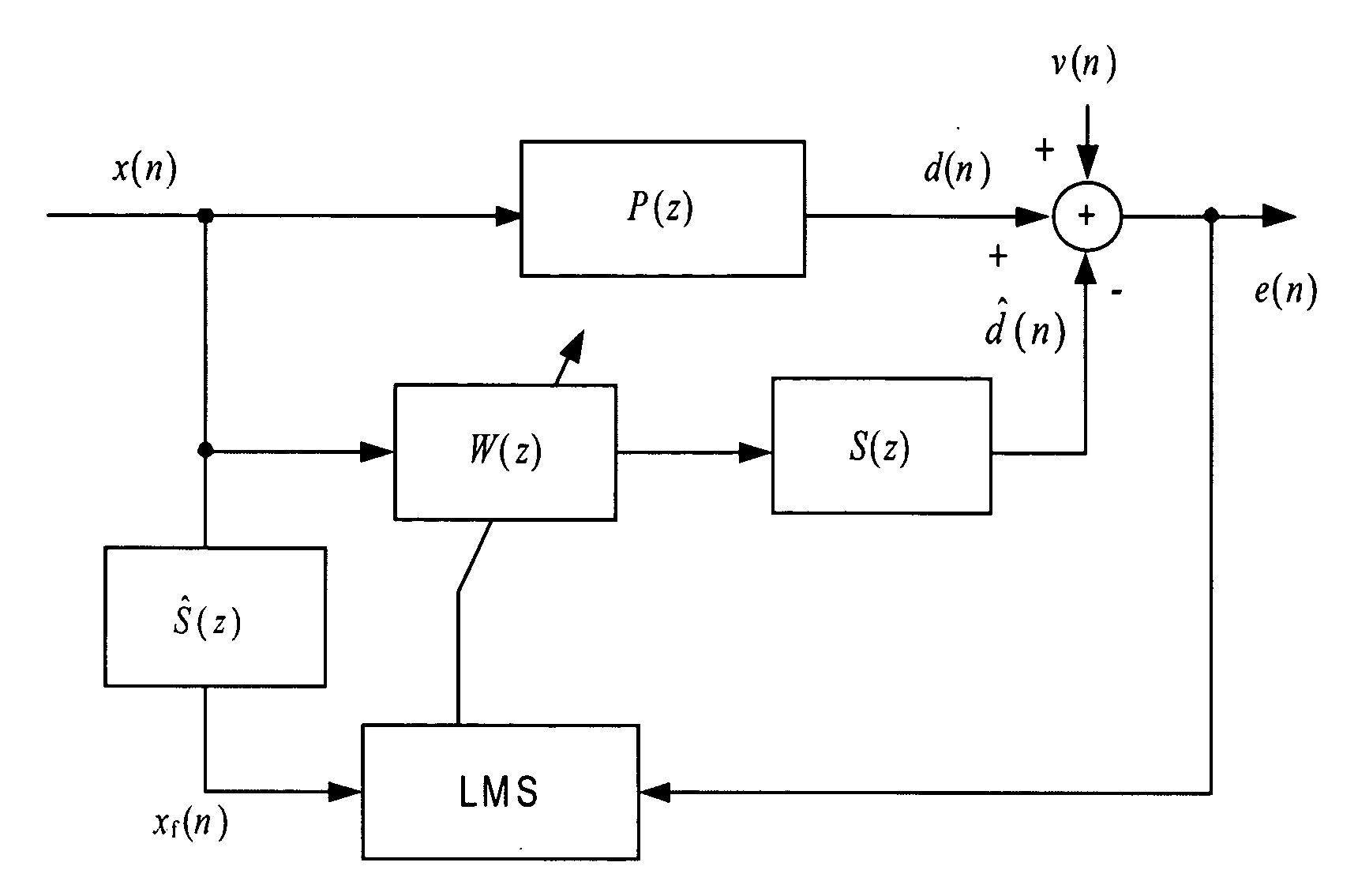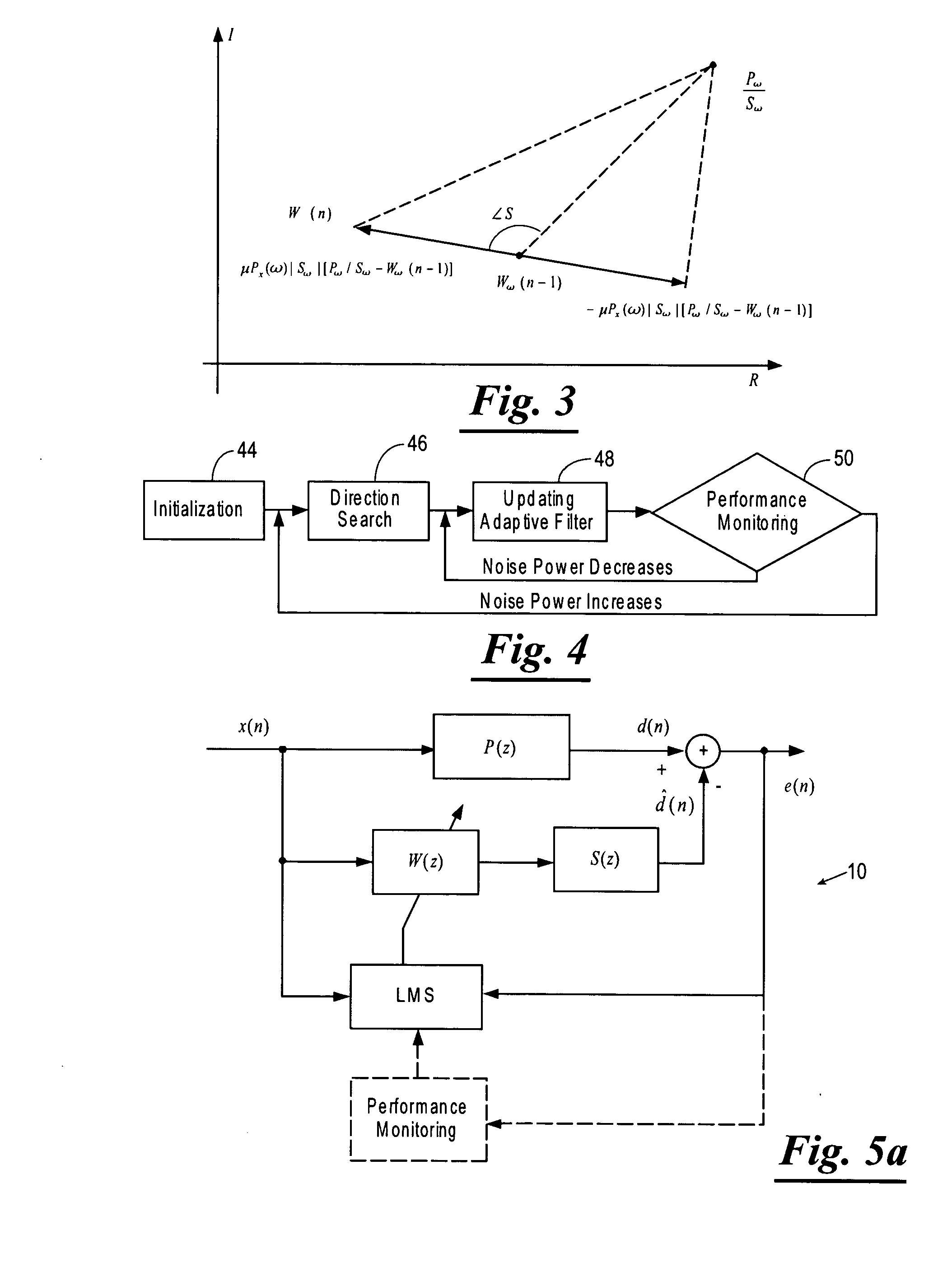Active noise control algorithm that requires no secondary path identification based on the SPR property
a passive noise and property technology, applied in the field of active noise control algorithms, can solve the problems of increasing the complexity of the control system implementation, destroying the control system performance, and increasing the complexity of the control system, and achieve the effect of reducing the system complexity
- Summary
- Abstract
- Description
- Claims
- Application Information
AI Technical Summary
Benefits of technology
Problems solved by technology
Method used
Image
Examples
example 1
Single-Tone ANC without Secondary Path Identification
[0044]An example of an ANC control algorithm 34 without secondary path identification for a single-tone sinusoid noise is proposed in this section. In the real world, many noises are periodic, for instance, those that are generated by sources 14, such as engines, compressors, propellers, and fans [1]. As a result, the method in this Example does have some practical application. Also, as we shall see, this method can be directly extended to the parallel configuration for multiple-frequency ANC that was developed in [1, Sec. 4.4.2]. Meanwhile, the method from this Example is suitable for the active control of narrowband noise when the phase response of the secondary path meets a certain condition.
[0045]If the secondary path effect is not considered at all, the update of the adaptive filter coefficients w(n) based on the LMS algorithm is
w(n)=w(n−1)+μe(n)x*(n) (7)
where ε is a small positive number. In (7), the reference signal 26 doe...
example 2
Broadband ANC without Secondary Path Identification
[0064]Though the algorithm of Example 1 for single-tone noise without secondary path identification has a few practical applications, when the noise to be cancelled is broadband, or narrowband but the secondary path phase response doesn't meet the requirement of (13), then that method is not appropriate. In this section, a new ANC method is introduced for these situations that also does not require the identification of the secondary path. This method desirably uses a sub-band implementation of the ANC techniques, i.e., converting the broadband ANC problem into several narrowband noise control problems that are suitable for treatment by the method developed in Example 1.
A. Sub-Band Implementation of ANC
[0065]Delayless sub-band ANC algorithms are discussed in [20]-[21] to overcome the slow convergence of the filtered-x LMS algorithm caused by the wide spectral dynamic range of the reference signal 26. The method introduced by Morgan ...
PUM
 Login to View More
Login to View More Abstract
Description
Claims
Application Information
 Login to View More
Login to View More - R&D
- Intellectual Property
- Life Sciences
- Materials
- Tech Scout
- Unparalleled Data Quality
- Higher Quality Content
- 60% Fewer Hallucinations
Browse by: Latest US Patents, China's latest patents, Technical Efficacy Thesaurus, Application Domain, Technology Topic, Popular Technical Reports.
© 2025 PatSnap. All rights reserved.Legal|Privacy policy|Modern Slavery Act Transparency Statement|Sitemap|About US| Contact US: help@patsnap.com



